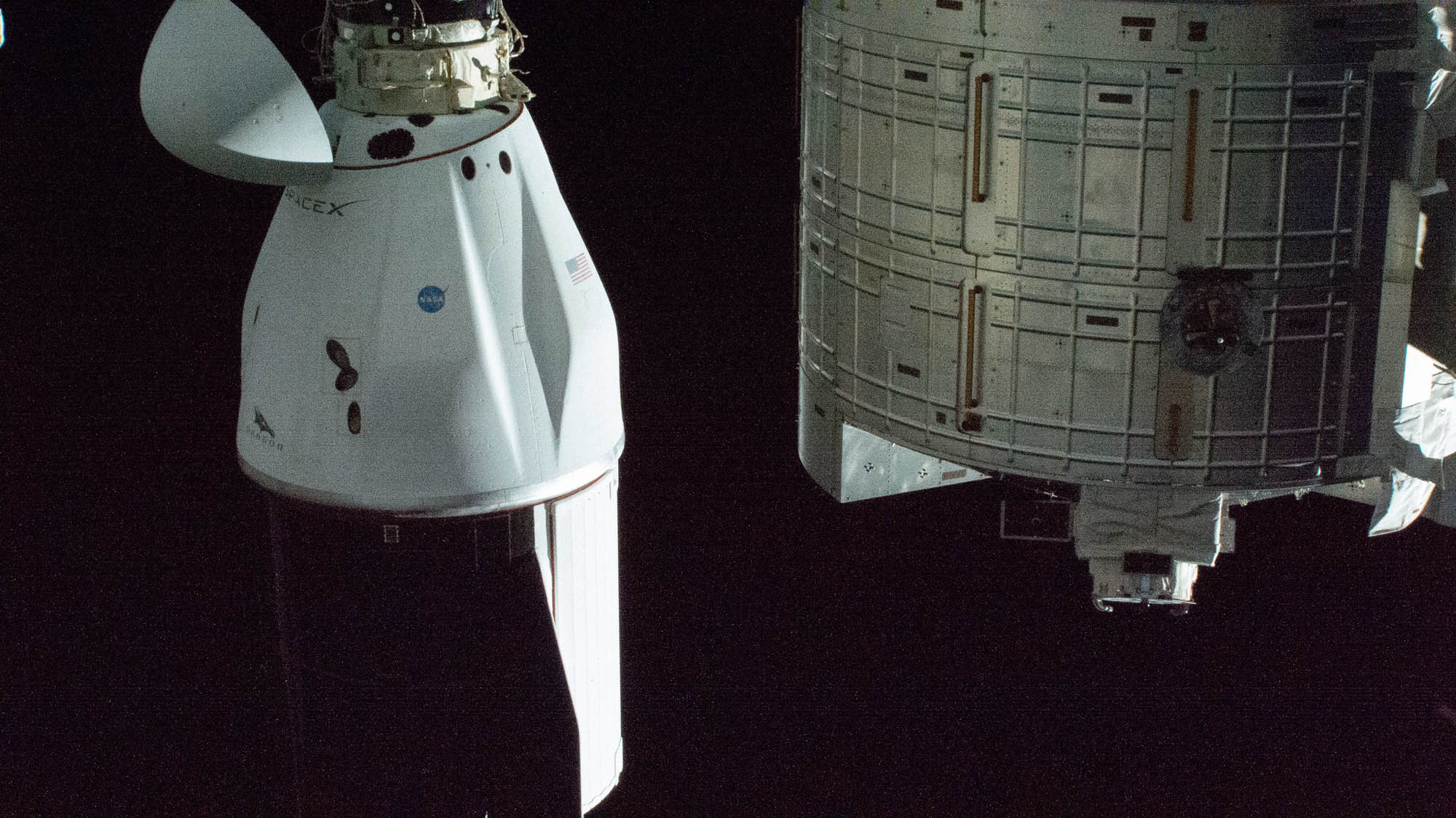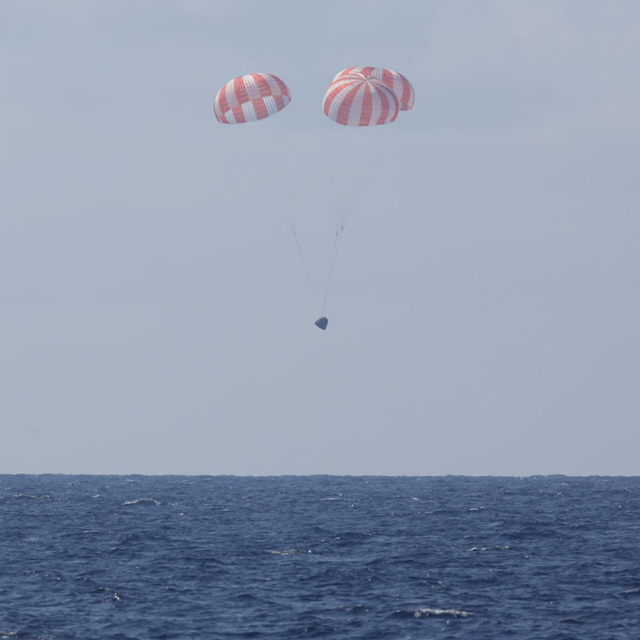SpaceX's upgraded Cargo Dragon supply ship makes 1st Atlantic splashdown

A SpaceX Dragon cargo resupply spacecraft returned to Earth from the International Space Station Wednesday (Jan. 13), splashing down off the coast of Florida for the first time ever.
The Dragon CRS-21 mission, SpaceX's 21st space station cargo delivery for NASA, launched Dec. 6, 2020, with 6,400 lbs. (2,903 kilograms) of supplies and science equipment for the seven-person crew of Expedition 64. After a one-day delay due to bad weather at the splashdown zone, the upgraded vehicle autonomously undocked from the space station for the first time on Tuesday (Jan. 12), and it splashed down in the Gulf of Mexico west of Tampa about 35 hours later, at 8:26 p.m. EST on Wednesday, Jan. 13 (0126 Jan. 14 GMT).
While previous Dragon cargo missions have ended with parachute-assisted splashdowns in the Pacific, the newly upgraded version of SpaceX's cargo vessel is designed to land in the Atlantic Ocean, closer to the science processing center at NASA's Kennedy Space Center in Florida.
The CRS-21 mission was not only the first to land near Florida, it was also the first to autonomously dock at, and undock from, the International Space Station. Previous Cargo Dragons have relied on astronauts operating the station's Canadarm2 robotic arm to grapple the spacecraft and berth it with the orbiting lab.
Other space cargo delivery vehicles, like Northrop Grumman's Cygnus spacecraft and Japan's H-II Transfer Vehicle, are intentionally destroyed at the end of their missions; space station astronauts fill the capsules with trash, then use Canadarm2 to send them off toward Earth, and they safely burn up in the atmosphere. SpaceX's Dragon, however, is a reusable spacecraft designed to safely deliver science experiments back to Earth from the space station. The Dragon CRS-21 mission returned with more than 4,400 lbs. (2,000 kg) of "valuable scientific experiments and other cargo," NASA officials said in a statement.
"The upgraded cargo Dragon capsule used for this mission contains double the powered locker availability of previous capsules, allowing for a significant increase in the research that can be delivered back to scientists," NASA added. "Some scientists will get their research returned quickly, four to nine hours after splashdown."
Get the Space.com Newsletter
Breaking space news, the latest updates on rocket launches, skywatching events and more!

Some of the scientific cargo on board includes engineered heart tissue, organoids grown from human stem cells, biofilms that could corrode stainless steel, zero-g fiber optics and more.
SpaceX is planning to launch its next Dragon cargo resupply mission, CRS-22, in May of this year. The company's Crew Dragon capsule is currently docked with the space station and is expected to return to Earth with its four-person crew in May as well. The next Dragon launch will be another Crew Dragon, which is scheduled to launch the Crew-2 mission with another four astronauts in March.
Email Hanneke Weitering at hweitering@space.com or follow her on Twitter @hannekescience. Follow us on Twitter @Spacedotcom and on Facebook.
Join our Space Forums to keep talking space on the latest missions, night sky and more! And if you have a news tip, correction or comment, let us know at: community@space.com.

Hanneke Weitering is a multimedia journalist in the Pacific Northwest reporting on the future of aviation at FutureFlight.aero and Aviation International News and was previously the Editor for Spaceflight and Astronomy news here at Space.com. As an editor with over 10 years of experience in science journalism she has previously written for Scholastic Classroom Magazines, MedPage Today and The Joint Institute for Computational Sciences at Oak Ridge National Laboratory. After studying physics at the University of Tennessee in her hometown of Knoxville, she earned her graduate degree in Science, Health and Environmental Reporting (SHERP) from New York University. Hanneke joined the Space.com team in 2016 as a staff writer and producer, covering topics including spaceflight and astronomy. She currently lives in Seattle, home of the Space Needle, with her cat and two snakes. In her spare time, Hanneke enjoys exploring the Rocky Mountains, basking in nature and looking for dark skies to gaze at the cosmos.









